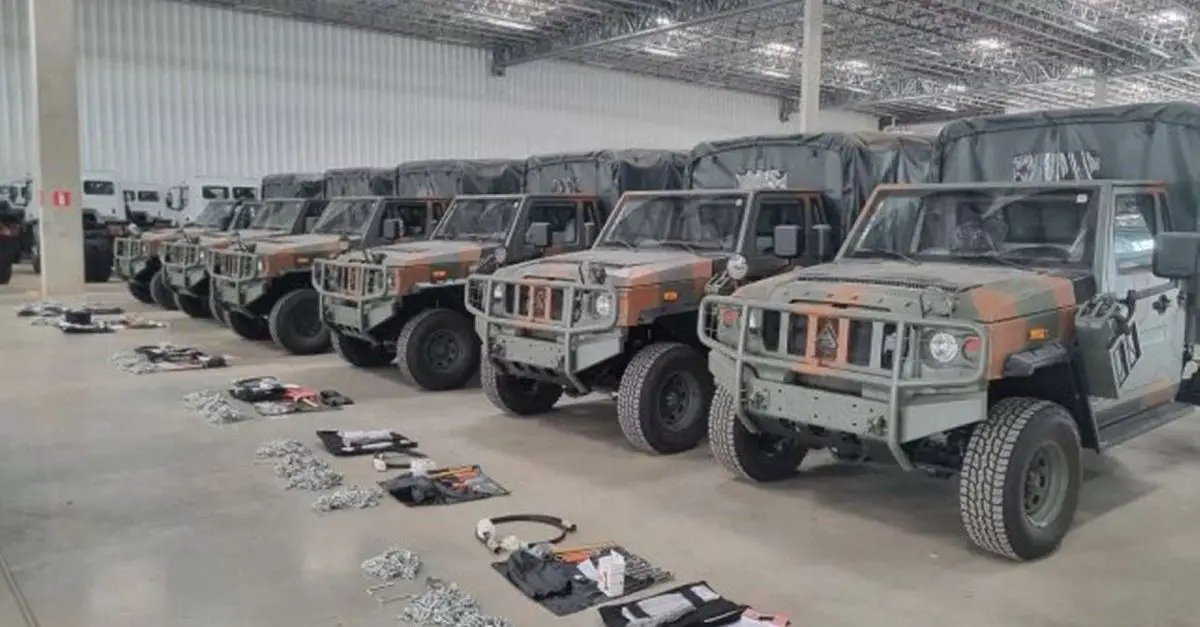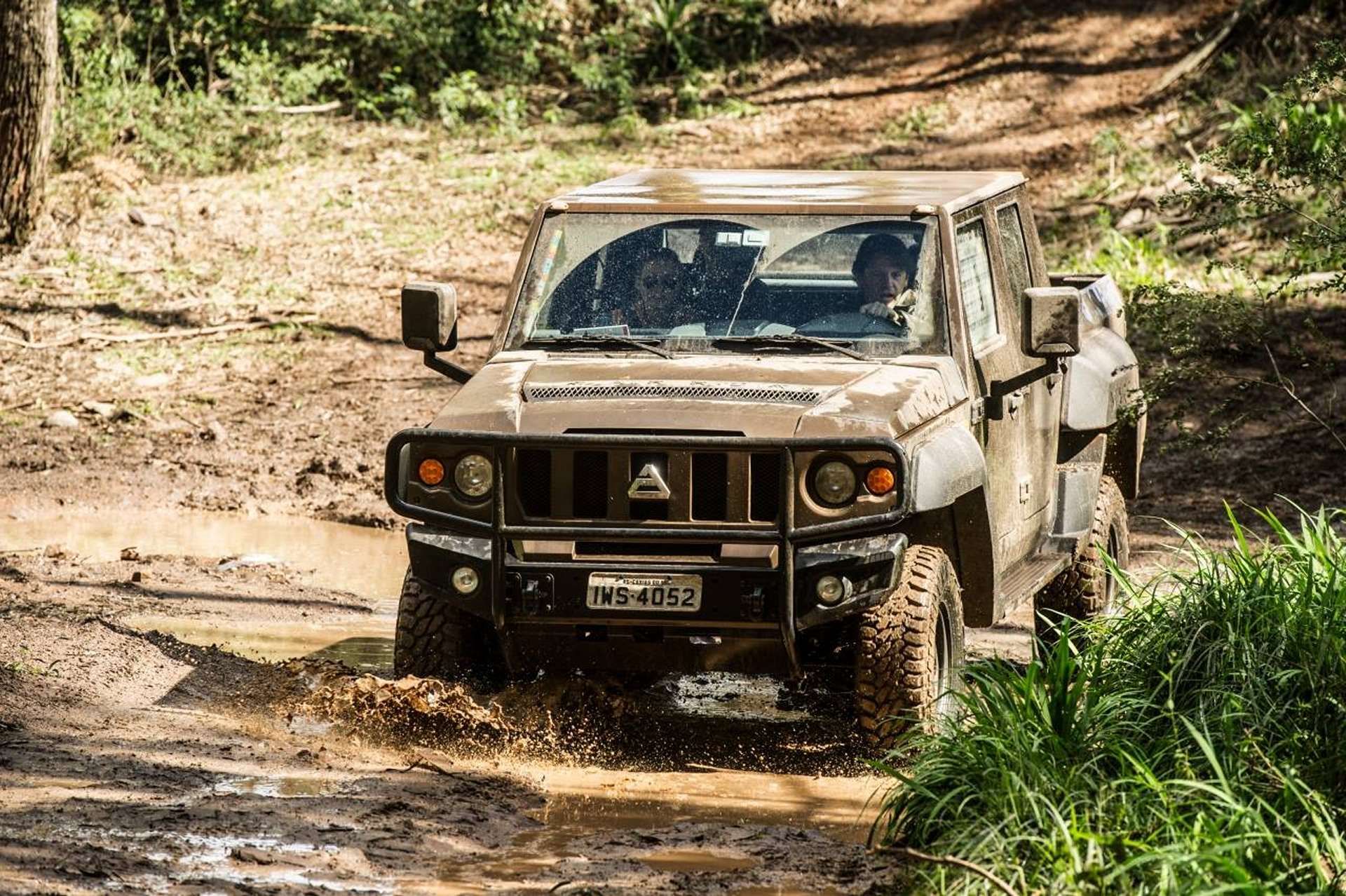Breaking News
Brazilian Army to modify 18 Agrale Marruá 4x4 vehicles for strategic border missions.
Between July 1 and July 4, 2024, the Brazilian SISFRON Program, part of the Federal Government's PAC, facilitated the delivery of eighteen Agrale Marruá 4x4 utility vehicles. These vehicles were delivered by the 2nd Military Region (2nd RM) and the São Paulo War Arsenal (AGSP) to Embraer Defense and Security (EDS) for transformation into specialized communications vehicles. This delivery marks the completion of three stages in the contractual schedule established between the Army's Communications and Electronic Warfare Command and EDS.
Follow Army Recognition on Google News at this link

These vehicles were delivered by the 2nd Military Region (2nd RM) and the São Paulo War Arsenal (AGSP) to Embraer Defense and Security (EDS) for transformation into specialized communications vehicles. (Picture source: Brazilian MoD)
To strengthen Brazil's operational presence along its western border with Paraguay and Bolivia, the SISFRON Program has acquired a total of 109 Agrale Marruá 4x4 utility vehicles, currently stored at Cia Sup / 2º B Sup and AGSP. This acquisition is part of a broader strategy to modernize and equip the 13th Motorized Infantry Brigade and the 18th Border Infantry Brigade, along with their supporting units. Initially stored at the Supply Company of the 2nd Supply Battalion and the São Paulo War Arsenal, the vehicles are now being delivered to EDS for conversion into specialized communications vehicles.
The conversion is taking place at EDS's industrial facility in Campinas, which also manufactures radar systems like the SABER M60 2.0 and SABER M200. These radars are crucial to Brazil's defense capabilities, particularly in air surveillance and early warning systems. The SABER M60, a 3D radar operating in the S-band, can track up to 60 targets simultaneously within a 60-kilometer range and up to 16,400 feet in altitude. The upgraded SABER M60 2.0 version has recently been delivered to the Brazilian Army, enhancing its operational capabilities.
The SABER M200 Vigilante radar, designed for medium-range air surveillance, uses active phased array technology and can cover up to 200 kilometers. It offers a fully electronic azimuth sweep and identifies and tracks various aerial threats with precision. The M200 has been tested in diverse environments, including the Parintins Folkloric Festival in the Amazon. It meets both national defense requirements and international market demands.
These vehicles will undergo modifications by EDS subcontractors ITURRI and RFCOM, and once transformed, they will be integrated into the Command and Control Systems of the Western Military Command as part of the Decision Support and Sensing Project 2 (Prj SAD 2). Project SAD 2 involves several key military departments, including the Land Operations Command, the Logistics Command, the Department of Science and Technology, and others. Each department contributes to the project's implementation, aligning with strategic objectives along Brazil's borders.

To strengthen Brazil's operational presence along its western border with Paraguay and Bolivia, the SISFRON Program has acquired a total of 109 Agrale Marruá 4x4 utility vehicles. (Picture source: Brazilian MoD)
The Agrale Marruá, a 4x4 utility vehicle produced by the Brazilian company Agrale, is central to this initiative. It is designed for military applications but is also available in civilian models. The Marruá is used by the Brazilian Army and Marine Corps, as well as other Latin American militaries, including Argentina, Ecuador, and Paraguay. Known for its durability and off-road capabilities, the Marruá supports missions such as troop transport, reconnaissance, command and control, and electronic warfare.
The Marruá features a Cummins ISF engine with 2800 cm³ displacement, producing 150 hp and 36.7 kgfm of torque, and can reach a top speed of 134.2 km/h. The vehicle's design includes a heavy-duty drivetrain, high spring suspension, and a corrosion-resistant body, suitable for harsh environments. Its versatility includes configurations like ambulances and command vehicles, as well as civilian versions for mining and adventure use. The Marruá's performance on rugged terrains, with features like power steering, solid disc brakes, and water fording capability up to 80 cm deep, makes it a significant vehicle in both military and civilian sectors.
Launched in 2012, the SISFRON Program aims to enhance surveillance and security along Brazil's nearly 17,000 kilometers of land borders shared with 11 countries. It targets illegal activities such as drug trafficking and arms smuggling using advanced technologies like radar systems, sensors, communication networks, and drones. The program is managed by the Tepro consortium, which includes Savis Tecnologia e Sistemas and OrbiSat Indústria e Aerolevantamento, subsidiaries of Embraer Defesa e Segurança.
SISFRON promotes cooperation between military and law enforcement agencies, enhancing public safety and contributing to regional economic development. It is expected to create numerous jobs and facilitate inter-agency operations. The system's capabilities also extend to urban areas to address issues like drug trafficking affecting major cities. The initiative aligns with Brazil's National Defense Strategy, emphasizing technological innovation and national sovereignty, and represents a long-term investment in Brazil's security infrastructure, with a projected cost of $4.6 billion USD.

The Agrale Marruá, a 4x4 utility vehicle produced by the Brazilian company Agrale, is used by the Brazilian Army and Marine Corps, as well as other Latin American militaries, including Argentina, Ecuador, and Paraguay. (Picture source: Agrale)


























